
How to Use TDS Sensor 2: Examples, Pinouts, and Specs
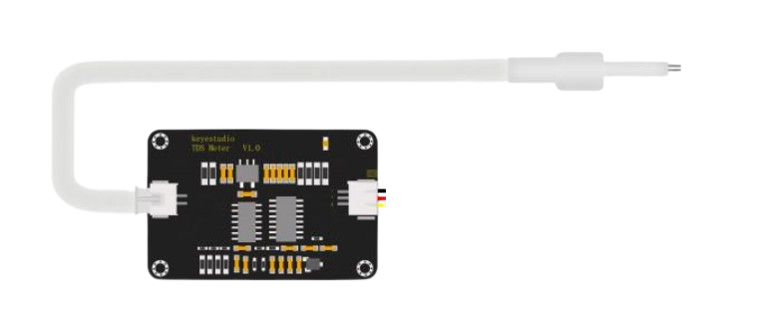
 Design with TDS Sensor 2 in Cirkit Designer
Design with TDS Sensor 2 in Cirkit DesignerIntroduction
The TDS Sensor 2 is an electronic device designed to measure the Total Dissolved Solids (TDS) in a liquid, providing a quantitative indication of the purity of water. The sensor works by measuring the conductivity of the water, which correlates to the amount of dissolved solids present. This sensor is essential for applications such as water quality monitoring, aquarium maintenance, hydroponics, and water filtration systems.
Explore Projects Built with TDS Sensor 2
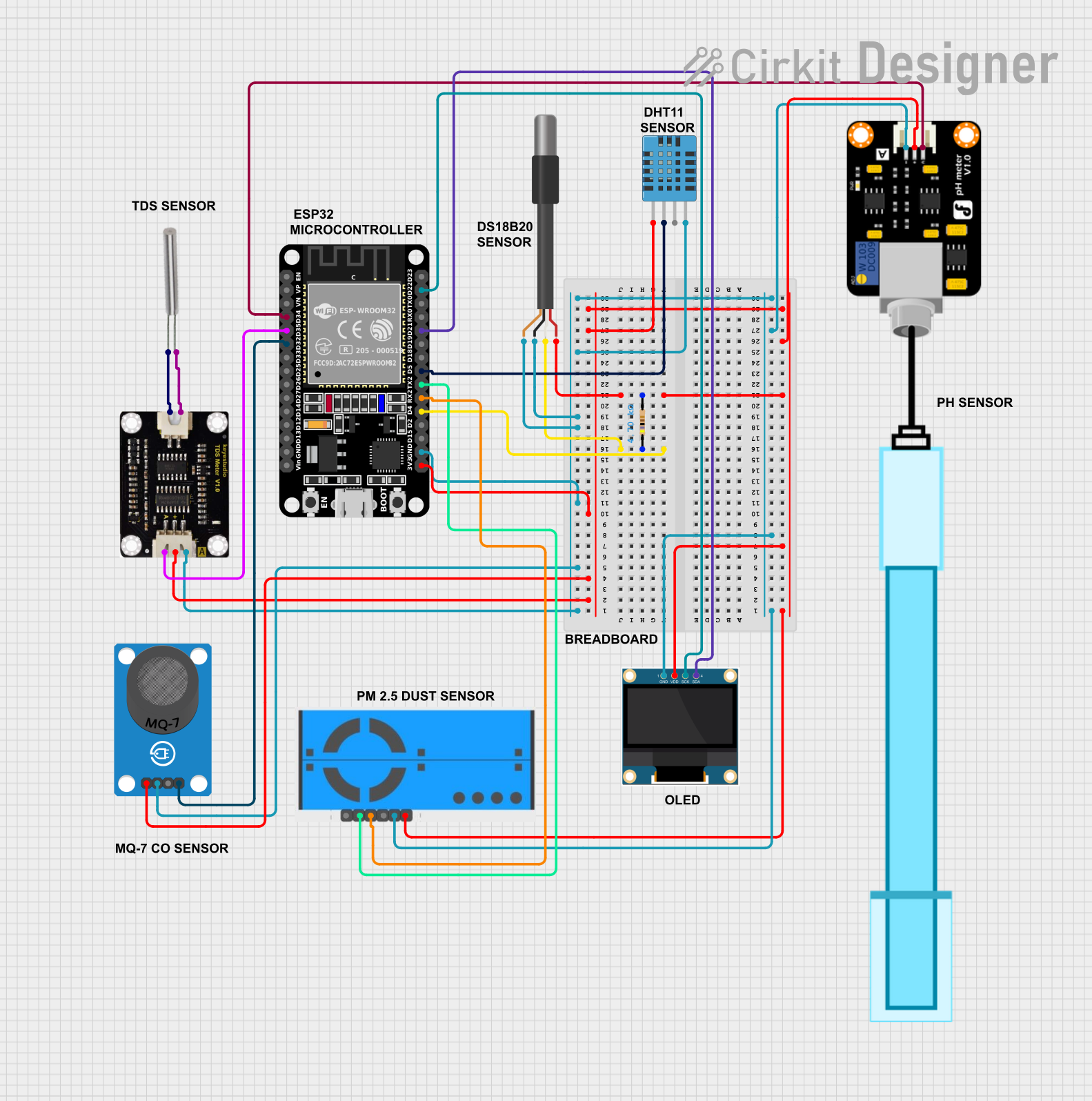
 Open Project in Cirkit Designer
Open Project in Cirkit Designer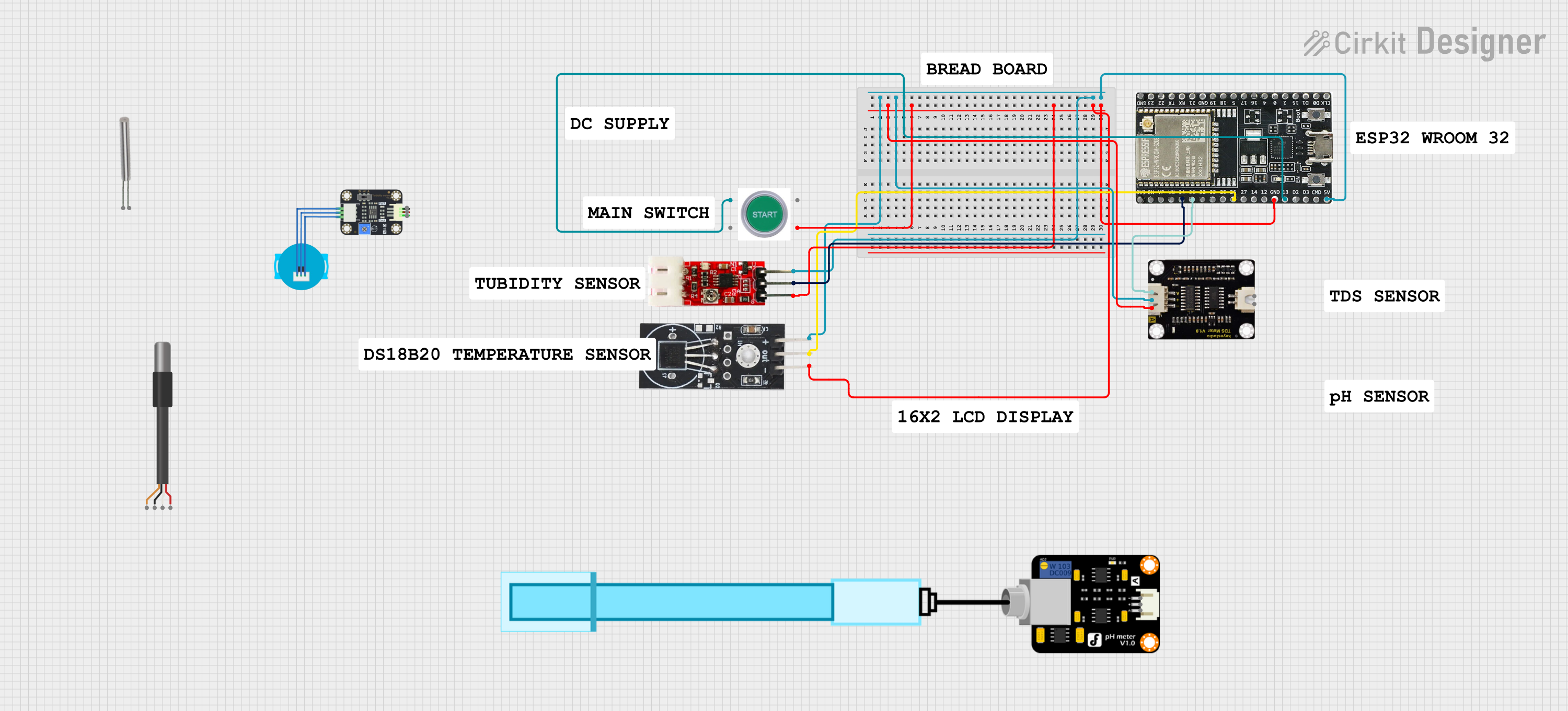
 Open Project in Cirkit Designer
Open Project in Cirkit Designer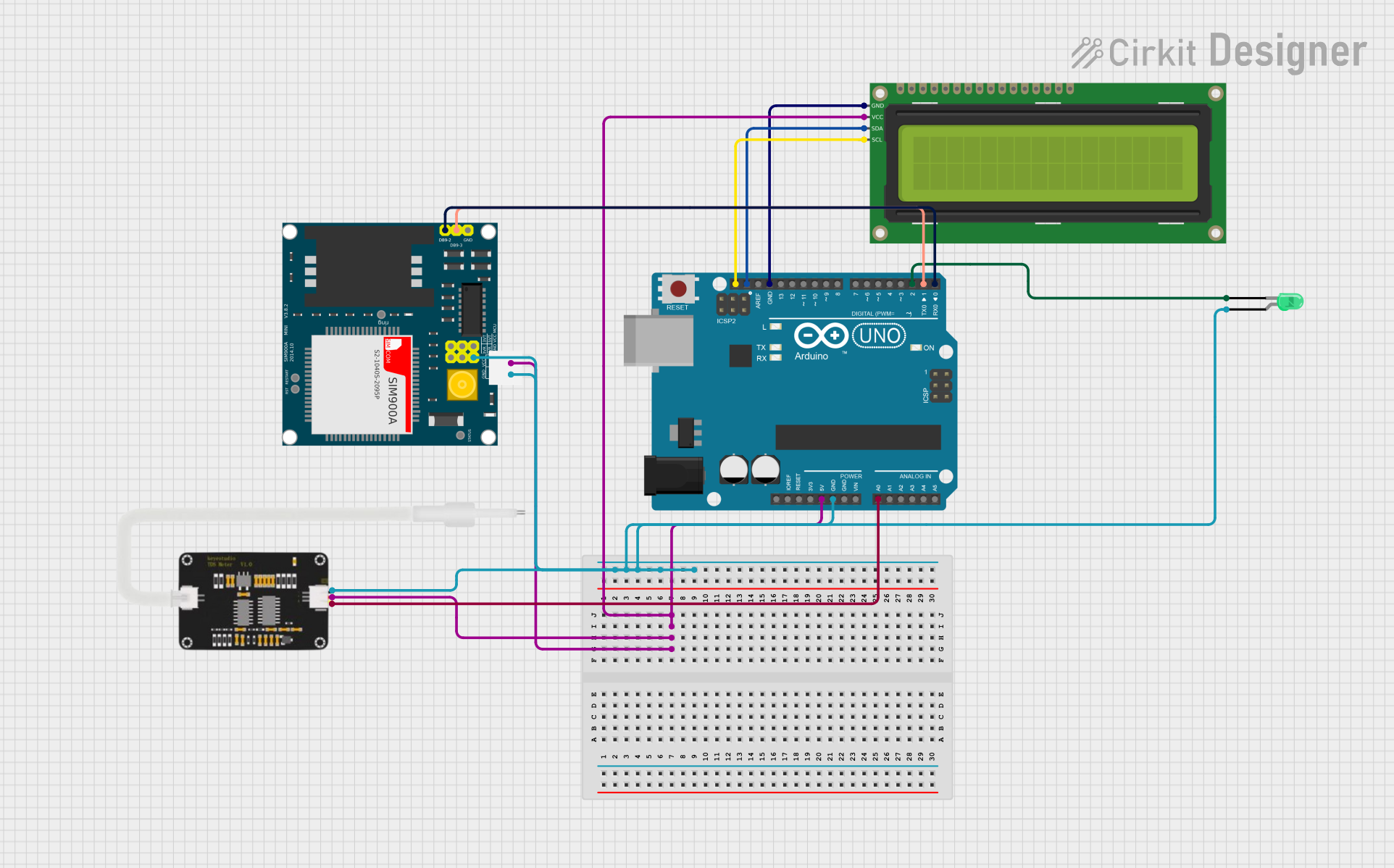
 Open Project in Cirkit Designer
Open Project in Cirkit Designer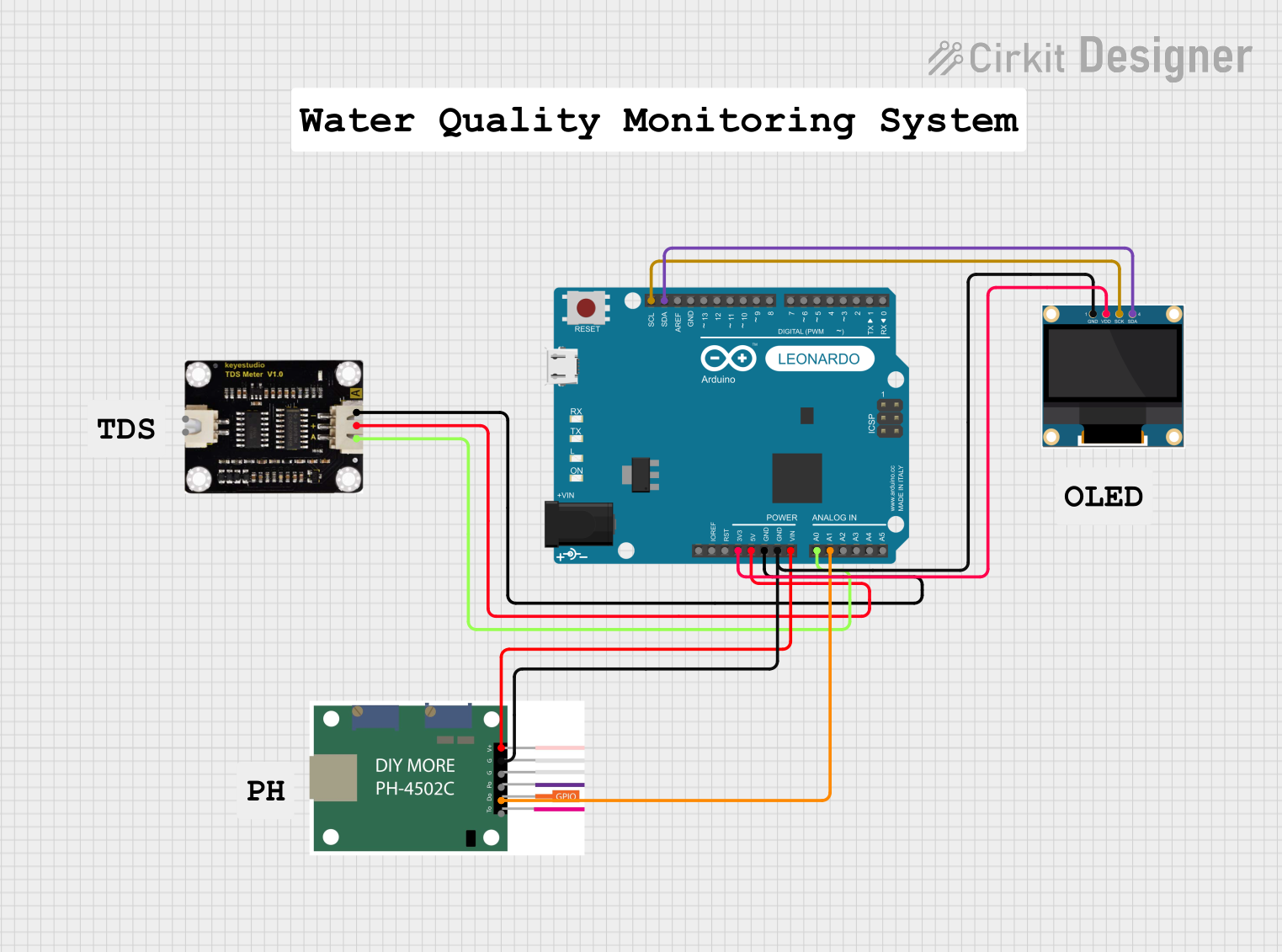
 Open Project in Cirkit Designer
Open Project in Cirkit DesignerExplore Projects Built with TDS Sensor 2

 Open Project in Cirkit Designer
Open Project in Cirkit Designer
 Open Project in Cirkit Designer
Open Project in Cirkit Designer
 Open Project in Cirkit Designer
Open Project in Cirkit Designer
 Open Project in Cirkit Designer
Open Project in Cirkit DesignerCommon Applications and Use Cases
- Water quality testing for drinking water
- Monitoring in water treatment plants
- Aquarium water quality control
- Hydroponic nutrient level measurement
- Pool and spa maintenance
Technical Specifications
Key Technical Details
- Measurement Range: 0 to 1000 ppm
- Accuracy: ±2% F.S.
- Operating Voltage: 3.3V to 5.5V
- Output Voltage: 0 to 2.3V
- Operating Current: 3-6mA
- Operating Temperature: 0°C to 50°C
Pin Configuration and Descriptions
| Pin Number | Name | Description |
|---|---|---|
| 1 | VCC | Power supply (3.3V to 5.5V) |
| 2 | GND | Ground |
| 3 | AOUT | Analog output voltage (0 to 2.3V) |
| 4 | NC | Not connected (reserved for future use) |
Usage Instructions
How to Use the Component in a Circuit
- Connect the VCC pin to a 3.3V or 5V power supply.
- Connect the GND pin to the ground of the power supply.
- Connect the AOUT pin to an analog input on your microcontroller (e.g., Arduino UNO).
Important Considerations and Best Practices
- Ensure that the sensor is properly calibrated before use.
- Avoid touching the sensor electrodes to prevent contamination and inaccurate readings.
- Use a pull-down resistor if necessary to stabilize the output signal.
- Keep the sensor away from electromagnetic interference for accurate measurements.
Example Code for Arduino UNO
// TDS Sensor 2 Example Code for Arduino UNO
const int TdsSensorPin = A0; // Analog input pin connected to sensor output
const float TdsFactor = 0.5; // Factor for converting voltage to TDS value
void setup() {
Serial.begin(9600); // Start serial communication at 9600 baud rate
}
void loop() {
int analogValue = analogRead(TdsSensorPin); // Read the analog value from sensor
float voltage = analogValue * 5.0 / 1024.0; // Convert to voltage
float tdsValue = voltage * TdsFactor * 1000; // Convert voltage to TDS value
// Print the TDS value to the serial monitor
Serial.print("TDS Value: ");
Serial.print(tdsValue);
Serial.println(" ppm");
delay(1000); // Wait for a second before taking the next reading
}
Code Comments
TdsSensorPinshould be set to the analog pin to which the sensor's output is connected.TdsFactoris a calibration factor that converts the voltage reading to TDS value.analogReadfunction reads the sensor output voltage as an analog value.- The analog value is then converted to a voltage based on the reference voltage (5V in this case).
- The voltage is multiplied by the
TdsFactorto get the TDS value in ppm. - The TDS value is printed to the serial monitor every second.
Troubleshooting and FAQs
Common Issues Users Might Face
- Inaccurate Readings: Ensure the sensor is calibrated correctly. Avoid touching the electrodes and ensure the sensor is clean.
- No Output Voltage: Check the power supply connections and ensure the sensor is receiving the correct voltage.
- Fluctuating Readings: Use a pull-down resistor to stabilize the output and keep the sensor away from electromagnetic interference.
Solutions and Tips for Troubleshooting
- Calibration: Perform a calibration using a solution with a known TDS value.
- Cleaning: Regularly clean the sensor electrodes with distilled water to prevent buildup.
- Stabilization: If the output signal is unstable, consider adding a capacitor or a pull-down resistor to the circuit.
FAQs
Q: Can the TDS Sensor 2 be used in saltwater? A: Yes, but the measurement range and calibration factor may need to be adjusted for high TDS levels.
Q: How often should the sensor be calibrated? A: Calibration frequency depends on usage, but it is generally recommended to calibrate the sensor every month or after any maintenance.
Q: Is the sensor waterproof? A: The sensor is designed to be immersed in water, but the electronic components and connections should be kept dry.
Q: What is the lifespan of the TDS Sensor 2? A: With proper maintenance and use, the sensor can last several years. However, the electrodes may degrade over time and affect accuracy.